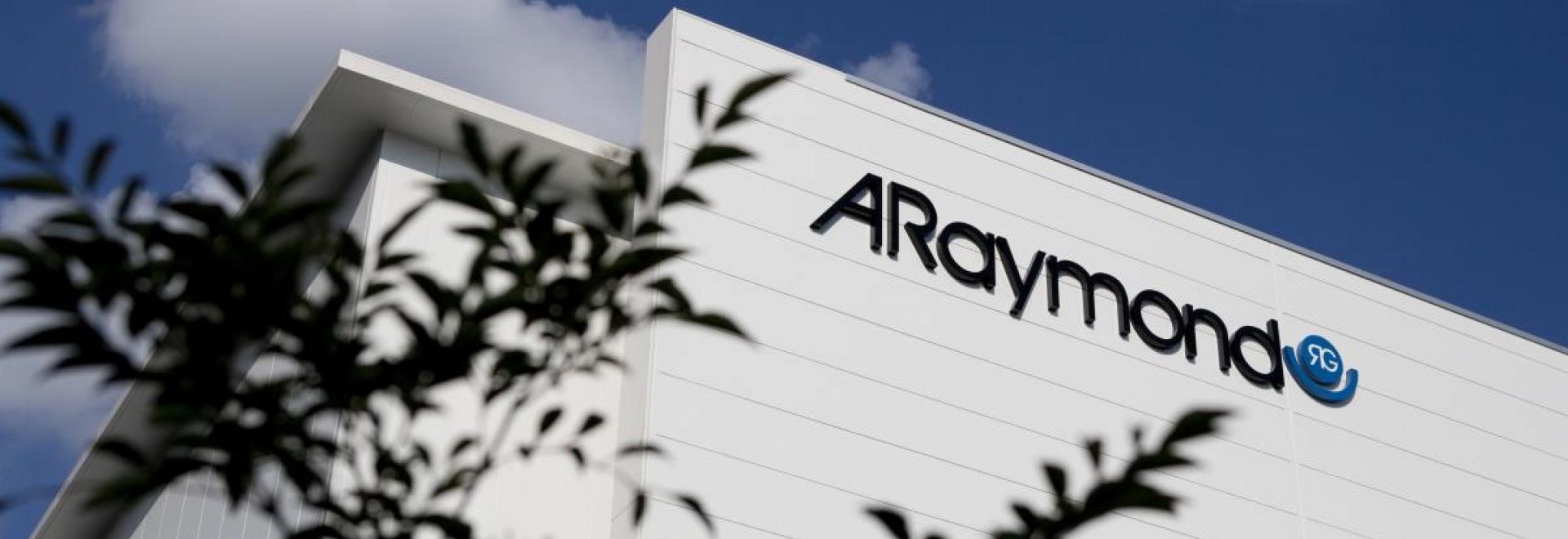New ARaymond™ quick connector allows SCR functions in any outside temperature

Rayconnect*, international expert in fluid connection, is to launch a new quick connector designed to help automotive manufacturers comply with the latest EU legislation aimed at reducing pollutant emissions from all vehicles.
Under the new Euro 6 regulation – which will come into force on 1 September 2014 for the approval of vehicles, and from 1 January 2015 for the registration and sale of new types of cars – all vehicles equipped with a diesel engine will be required to substantially reduce their emissions of nitrogen oxides. Emissions from cars and other vehicles intended to be used for transport will be capped at 80 mg/km – an additional reduction of more than 50% compared with the previous Euro 5 standard. Combined emissions of hydrocarbons and nitrogen oxides from diesel vehicles will also be reduced, and will be capped at, for example, 170 mg/km for cars and other vehicles intended to be used for transport.
In order to comply with the current Euro 5 regulation, vehicles are fitted with a selective catalytic reduction (SCR), a mechanism which converts nitrogen oxides (NOx) with the aid of a catalyst into diatomic nitrogen (N2) and water. A liquid solution of urea and water is added to a stream of exhaust gas and converted into ammonia (NH₃) in the exhaust line. The ammonia is then adsorbedonto a catalyst. Carbon dioxide (CO2) is a reaction product when urea is used as the reductant.
However, while under the Euro 5 regulation it is not mandatory for the SCR to function during cold weather – because the urea can freeze in the tube, stopping the SCR from working effectively – under Euro 6, SCRs will be required to function whatever the outside temperature is, and therefore require the ability to de-freeze the urea.
The new ARaymond™ quick connector is designed to make this happen. The existing ARaymond™ connector – first launched 20 years ago and primarily designed and used for the fuel line – was adapted to allow the urea to reach the SCR through a tube, but only functions in warm weather. The key difference is the use of a positive temperature coefficient (PTC) thermistor, which is a material that experiences an increase in electrical resistance when the temperature is raised. The PTC within the new ARaymond™ quick connector is a blue disk. Heat is created and transferred by contact between the blue disk and a resin. This enables the PTC thermistor to regulate the heat transferred within the SCR whatever the outside temperature is, by increasing the heat of the quick connector’s body – which carries the urea — thereby allowing the urea does not become frozen when the outside temperature is cold.
Alex Flamant, integrated functions expert at Rayconnect, explained that a significant advantage with the ARaymond™ quick connector is that the PTC blue disk can be assembled on any standard SCR and using any range of connectors. The key to that is a backpack attached to the quick connector body. “During the development and design of the backpack we have tested that it can be assembled on to any geometry of quick connector with a diameter size of 7.89 mm or 9.49 mm for the end piece.”
Mr Flamant added: “We design backpacks to be assembled on standard quick connectors that we currently manufacture, so therefore we can make even a standard non-heated quick connector a heated quick connector, because of the way the backpack can be attached – as long as the diameter size of the end piece is 7.89 mm or 9.49 mm. So whatever connector the customer chooses, we can attach the backpack to that connector in those diameter sizes. This is a huge advantage. This also means that the cost is much less.”
Mr Flamant said that another important advantage is that with the ARaymond™ quick connector, the heat transfer is the same whatever the voltage supply, so there is no need to change the voltage.
The new ARaymond™ quick connector is currently at the prototype stage and will be launched within the next few months. Mr Flamant said that Rayconnect is working closely with customers on the product,. “The market for this quick connector will be huge, because the SCR is becoming a standard technology for diesel light-duty vehicles,” he said.
For more information, please contact Rayconnect International SAS
*In this article, “Rayconnect” refers to RAYCONNECT INTERNATIONAL SASU (Simplified Sole Shareholder Company) – France (Registered number: RCS (Commerce and Business Registry) Grenoble 490195690), which is the editor of this Article and is responsible for this Article and has a license of use of trademark.
ARAYMOND™ is used as a trademark.
“Article” means the information and any materials available in this Article including, without any limitation, texts, figures, pictures, datasheets, product descriptions etc.
This Article does not constitute an offer or an agreement of any kind. This Article does not constitute a technical note. The Article is provided «as is» and only for evaluation purpose. Rayconnect makes no warranty or representation whatsoever regarding the Article, its use or its suitability to meet specific needs. RAYCONNECT DISCLAIMS ALL WARRANTIES, EXPRESS OR IMPLIED, INCLUDING BUT NOT LIMITED TO THE ACCURACY, RELIABILITY, NOVELTY, COMPLETENESS, MERCHANTABILITY OR FITNESS FOR ANY PARTICULAR PURPOSE OF THE INFORMATION, NOR THAT WILL ITS USE NOT INFRINGE ON ANY THIRD PARTY’S RIGHTS. Rayconnect is not liable for any incidental, consequential or special damages of any kind due to the use of the Article. Any rights not expressly granted herein are reserved. Except as expressly specified in these terms, nothing contained herein shall be construed as conferring any license or right of any copyright, trademark, patent, or any proprietary rights. Any unauthorized use of this Article may violate rights, and so, Rayconnect or any third party concerned may claim any damages or losses suffered. If you need further information, please contact Rayconnect.
